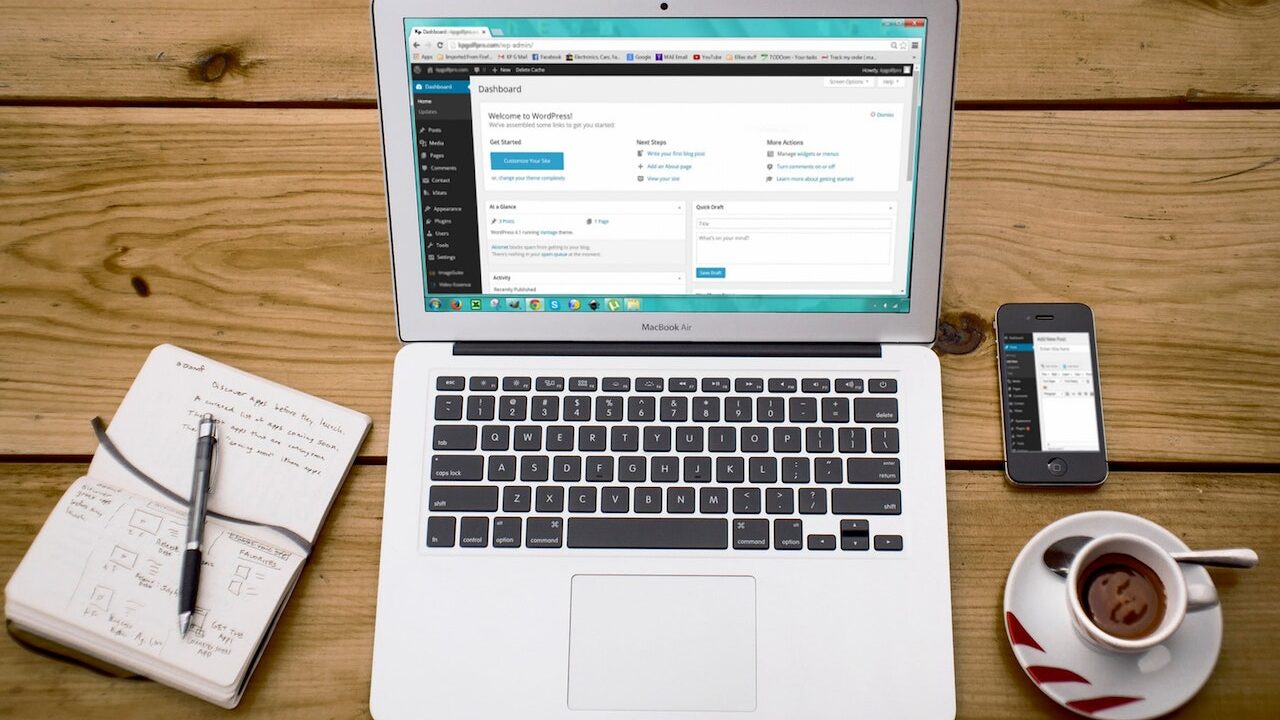
The digital age has transformed the way we communicate, share ideas, and express ourselves. Blogging, in particular, has become a powerful tool for individuals and businesses alike to reach a global audience. Whether you’re passionate about travel, food, fashion, or simply want to share your personal experiences and insights, starting a blog can be a rewarding endeavor. And when it comes to blogging platforms, WordPress stands out as the most popular and versatile choice. In this beginner’s guide, we’ll walk you through the steps to start your very own WordPress blog in 2023.
WordPress stands out as a beacon for bloggers all over the world in the huge field of digital content creation. WordPress, which was founded in 2003, has grown from a simple blogging tool to a full content management system (CMS) that powers more than 40% of the web. Its attractiveness stems not only from its sheer size, but also from its unprecedented adaptability and user-friendliness.
WordPress, at its heart, provides a platform for individuals and businesses to express, inform, and interact. WordPress provides the tools to bring your vision to life, whether you’re a hobbyist sharing personal anecdotes, a food enthusiast documenting gourmet adventures, or a corporate distributing market information. Because it is open-source, it is not only free to use, but also infinitely configurable. Users may customize the style and feel of their blog with a huge repository of themes, ensuring it connects with their distinct voice and audience.
What genuinely distinguishes WordPress is its plugin framework. These plugins, which number in the tens of thousands, allow users to extend the functionality of their blog far beyond basic posts. The possibilities are endless, ranging from SEO optimization and e-commerce integrations to social media sharing and analytics.
In addition, the WordPress community is a thriving web of developers, designers, and bloggers. This means that assistance, advice, and inspiration are constantly available, making the blogging journey less intimidating for novices.
Blogging remains a strong platform for individuals and organizations to communicate their stories, thoughts, and skills in today’s digital age. WordPress stands out as the premier platform for aspiring bloggers because of its user-friendly interface and robust functionality. If you’re thinking about beginning a WordPress blog, this comprehensive guide will give you all you need to know.
Why Choose WordPress?
Before diving into the how-to, it’s essential to understand why WordPress is the go-to platform for many bloggers:
Flexibility and Customisation: With thousands of themes and plugins available, WordPress allows you to design your blog to match your unique style and functionality needs.
User-Friendly Interface: Even if you’re not tech-savvy, WordPress’s intuitive dashboard makes it easy to publish posts, add media, and manage comments.
SEO-Friendly: WordPress is designed with search engines in mind, helping your blog rank higher in search results.
Community Support: A vast community of developers, designers, and bloggers means you’ll always find help, tutorials, and resources online.
Step-by-Step Guide to Starting Your WordPress Blog
- Choose a Niche:
Before you even think about setting up your blog, decide on a niche or topic you’re passionate about. This will not only guide your content creation but also help in attracting a targeted audience.
- Pick a Domain Name:
Your domain name is your blog’s address on the internet, like ‘myawesomeblog.com’. Choose a name that’s short, memorable, and relevant to your niche.
- Select a Web Hosting Provider:
Web hosting is where your blog’s files are stored online. There are many hosting providers out there, but some popular ones optimised for WordPress include Bluehost, SiteGround, and HostGator.
- Install WordPress:
Most hosting providers offer a one-click WordPress installation. Once installed, you can access your blog by logging into your WordPress dashboard using the credentials provided.
- Choose a Theme:
A theme determines the look and feel of your blog. WordPress offers numerous free and premium themes. Pick one that resonates with your niche and personal style.
- Install Essential Plugins:
Plugins extend the functionality of your blog. Some must-have plugins for beginners include Yoast SEO (for search engine optimisation), Akismet (for spam protection), and Jetpack (for site performance and security).
- Create Your First Post:
Navigate to ‘Posts’ in your dashboard, click ‘Add New’, and start writing! Remember to add relevant images, format your text, and use categories and tags to organize your content.
- Optimize for SEO:
To increase your blog’s visibility on search engines, use relevant keywords in your content, optimize your images, and use the Yoast SEO plugin to help with meta descriptions and titles.
- Engage with Your Audience:
Respond to comments, engage with readers on social media, and encourage feedback. Building a community around your blog will boost its growth and reach.
- Stay Consistent:
Consistency is key in blogging. Set a posting schedule, whether it’s once a week or once a month, and stick to it. Regular content keeps your audience engaged and attracts new readers.
In Conclusion
Starting a blog in 2023 might seem daunting at first, but with the right tools and guidance, it’s a straightforward process. Remember, the journey of blogging is as rewarding as the destination. It’s a platform to share your voice, connect with like-minded individuals, and even monetize your passion. So, take the plunge, start your blog, and join the vibrant community of bloggers worldwide. Happy blogging!








